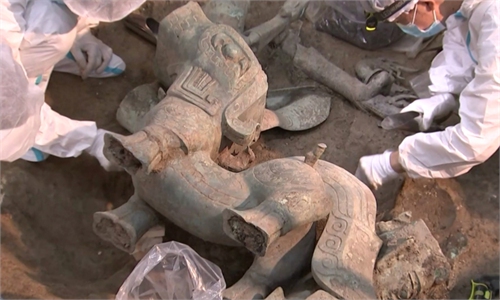ARTS / ART
Ruins site spanning Neolithic age to Qing Dynasty discovered in East China
Pottery pots excavated from the ruins site Photo: VCG
A large ruins site was recently discovered in Suzhou, East China's Jiangsu Province, which spans from the Neolithic age to Qing Dynasty (1644-1911) and 700 cultural relics have been unearthed so far.
The ruins site, called Tangbei ruins, has a large area and a long time span. It is seen as having great significance for understanding the historical context of the origin, formation and development of the civilization in Suzhou and the process of the integration of the region into the pluralistic and integrated pattern of Chinese civilization, Jiangsu TV reported.
According to the report, the site covers an area of around 200,000 square meters. When archeological researchers excavated the ruins, they found remains of wells, paddy fields and tombs.
Around 700 cultural relics have been unearthed, including a painted pottery pot discovered in a well. The pot is black with several red lines and is exquisitely painted.
Wang Xia, researcher of the Suzhou Archeology Research Institute and leader of the archeological team of the ruins site, said that burial objects in Neolithic tombs at the site have some differences in number and value, which can reflect differences in wealth and status and it demonstrates that some basic class distinctions had already emerged during the period.

